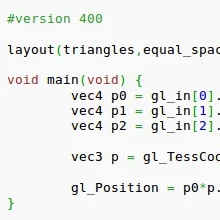LLGL Aims To Be Abstraction Layer For OpenGL, Direct3D 11/12 & Vulkan

LLGL is aiming to be a thin abstraction layer for modern graphics APIs. OpenGL and Direct3D 11 are largely supported so far (85% supported, according to the developer) while Direct3D 12 support was just started and Vulkan support is next on the TODO list. Basically, a common abstraction layer that in turn can target all major desktop graphics APIs (except for Apple's Metal, if you want to consider it an important API). LLGL works on Windows and Linux while macOS support is still in the early stages. The Low-Level Graphics Library is open-source under a three-clause BSD license.
If you are in need of supporting OpenGL/Direct3D/Vulkan and are potentially interested in an in-progress abstraction layer for seamlessly targeting the different APIs, check out LLGL's project site where there are also many code samples and examples for using their lightweight API, including tutorials on drawing a basic triangle, tessellation, texturing, query objects, render targets, multiple contexts, arrays, compute, stream outputs, and instancing.
It will be interesting to see where LLGL ends up in the months ahead and whether it manages to gain much adoption and the potential overhead of using this abstraction layer.
24 Comments

